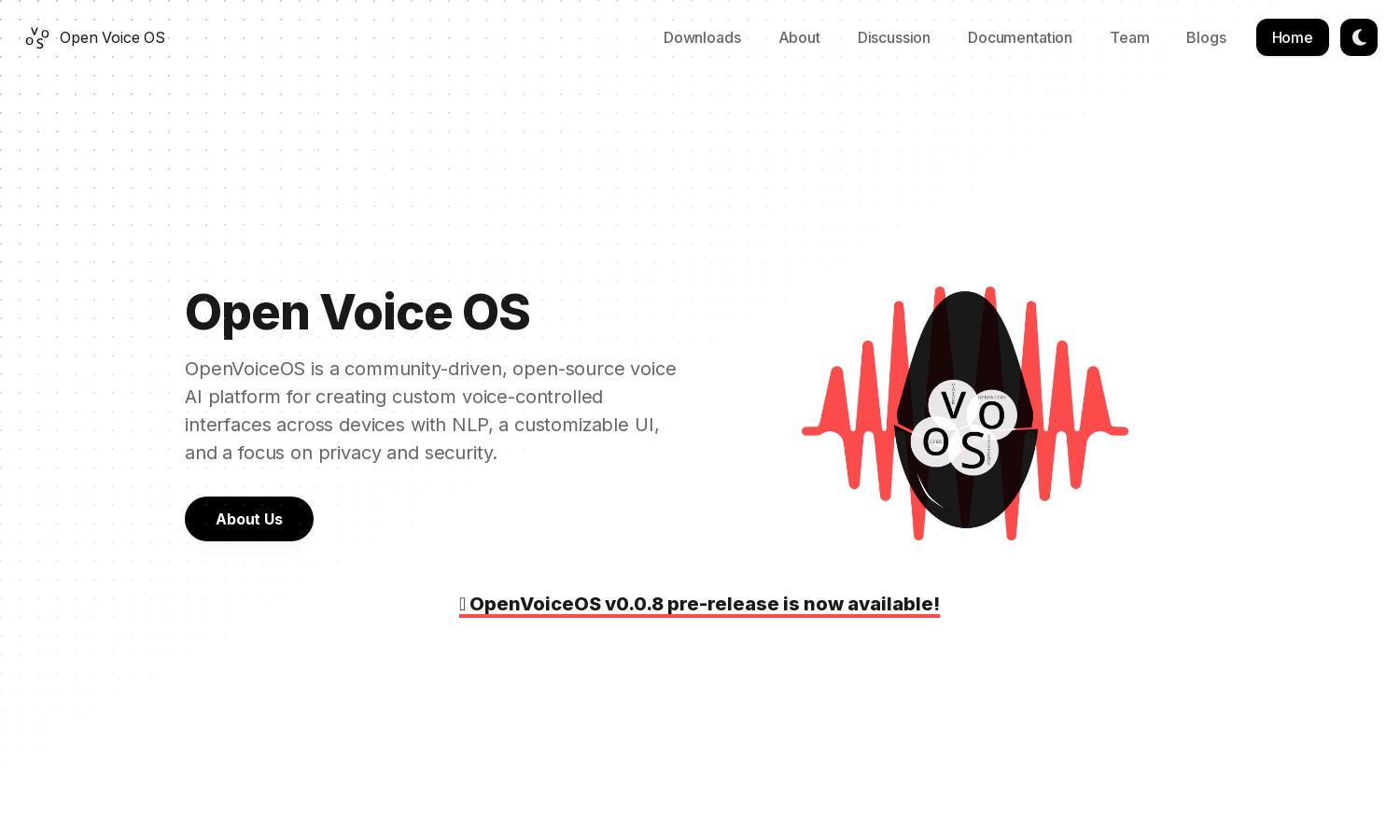Open Voice OS

About Open Voice OS
Open Voice OS is a revolutionary open-source voice AI platform designed for developers and enthusiasts. It enables the creation of customizable voice-controlled interfaces across multiple devices, prioritizing user privacy and security. With its experimental features, Open Voice OS fosters innovation in voice assistance technology.
Open Voice OS offers a free, community-driven platform with two main installation options: Docker and Python. While both are accessible at no cost, upgrading to more advanced features or contributing to the project can enhance user experience, ensuring continuous improvements and a robust development environment.
The user interface of Open Voice OS is designed for easy navigation and functionality. With a clean layout and intuitive controls, users can seamlessly interact with voice commands and features. This user-friendly design enhances the overall browsing experience while allowing developers to customize their applications easily.
How Open Voice OS works
Users begin by installing Open Voice OS through either Docker or Python, which sets up their voice assistant environment. Once installed, they can explore features, create skills, and customize interfaces. The platform's easy onboarding process and community support make it accessible, encouraging developers to innovate and contribute to advancements in voice technology.
Key Features for Open Voice OS
Community-Driven Development
Open Voice OS stands out with its emphasis on community-driven development. By allowing global developers to collaborate, it creates an open platform for innovation in voice AI technology, enabling unique solutions and enhancing user experiences tailored to diverse needs and platforms.
Multi-Platform Compatibility
Multi-platform compatibility is a key feature of Open Voice OS, allowing users to create voice-controlled interfaces for various devices, from headless systems to touch-friendly screens. This versatility attracts developers seeking to experiment and develop unique voice assistant applications across a wide range of platforms.
Experimental Features
Open Voice OS embraces experimental features, fostering innovation by enabling users to test new functionalities before they reach mainstream adoption. This unique aspect encourages developers to push boundaries in voice technology, providing an exciting playground for creativity and cutting-edge voice assistant applications.
You may also like:








